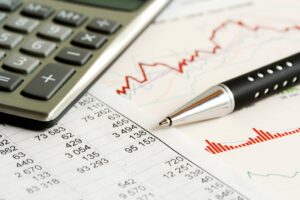
For other types of debt, the average interest rate is a simpler and equally effective metric. In the realm of financial analysis, understanding the cost of debt is crucial for evaluating a company’s financial health and making informed decisions. The cost of debt represents the expense a company incurs by borrowing funds from external sources.
Ask Any Financial Question
Join 250,000+ small business owners who built business credit history with Nav Prime — without the big bank barriers. We can add these two figures together to get the total annual interest, which is $19,250. Get instant access to video lessons taught by experienced investment bankers. Learn financial statement modeling, DCF, M&A, LBO, Comps and Excel shortcuts. The face value of the bond is $1,000, which is linked with a negative sign placed in front to indicate it is a cash outflow.
- To calculate the after-tax cost of debt, we multiply the cost of debt by the difference of 1 minus the effective tax rate.
- That’s why the same amount of money can be expensive when the interest rate is high and vice versa.
- In simpler terms, EV represents the total price a buyer would have to pay to fully acquire a company.
- Balancing debt and equity is critical to maximizing profitability and reducing financial risks.
- If a proposed project or investment offers a return higher than the WACC, it’s likely to create value for shareholders.
- For example, a bank might lend $1 million in debt capital to a company at an annual interest rate of 6.0% with a ten-year term.
How to Determine the Market Value of Debt
Lowering WACC isn’t solely a function of financial engineering; often, operational improvements can significantly impact a firm’s cost of capital. Additionally, the models used to determine the cost of equity, like the CAPM, come with their own set of assumptions, which may not always hold. A defining feature of WACC is its simultaneous consideration of both debt and equity. This unified perspective allows for the integration of various risk factors and return requirements, making WACC a robust metric for both strategic and tactical decision-making.
Calculating Annual Business Revenue 101: Why Is It Important?
- This is then used to estimate the return that stockholders will require.
- The cost of capital is the weighted average of the cost of debt and cost of equity.
- She holds a Bachelor of Science in Finance degree from Bridgewater State University and helps develop content strategies.
- Since they have a low cost of debt, they can consider taking out a mortgage to open a shop in a state where the potential income opportunity is twice the debt.
- The income tax paid by a business will be lower because the interest component of debt will be deducted from taxable income, whereas the dividends received by equity holders are not tax-deductible.
- One key difference between debt and equity financing is the financial impact.
Moreover, they get to keep ownership, avail of tax deductions, and build business credit. Businesses how to find the cost of debt use the following formula to calculate the cost of debt after tax. Business entities calculate the pre-tax cost of debt simply by dividing the total interest by total debt. Organizations can also find the cost of debt by summing interest rate, flotation cost, and risk premium. The YTM, expressed as a decimal, is 0.1077, which translates to a yield to maturity of ~10.77%. This means if an investor buys the bond for $950 and holds it until maturity, they can expect an annual return of about 10.77% (pre-tax).
This happens in situations where the company doesn’t have a bond or credit rating or where it has multiple ratings. We would look at the leverage ratios of the company, in particular, its interest coverage ratio. This formula calculates the blended average interest rate paid by a company on all its debt obligations in percentage form.
- If you only want to know how much you’re paying in interest, use the simple formula.
- In this blog, we have learned about the cost of debt, which is the effective interest rate that a company pays on its borrowed funds.
- Moreover, actively managing cash flow and working capital can help reduce the reliance on debt financing and minimise interest expenses.
- Imagine that our wine distribution company has issued $100,000 in bonds at a 5% interest rate.
- In our table, we have listed the two cash inflows and outflows from the perspective of the lender, since we’re calculating the YTM from their viewpoint.
- While WACC provides a comprehensive view of a firm’s cost of capital, it does so with certain assumptions and simplifications.
How to Calculate and Interpret Stock and Portfolio Beta

Follow the steps below to calculate the cost of debt using Microsoft Excel or Google Sheets. She’s written several business books and has been published on sites including Forbes, AllBusiness, and SoFi. She writes about bookkeeping business and personal credit, financial strategies, loans, and credit cards.

Cost of debt formula

The cost of debt is an important factor in financial analysis, as it affects Bookkeeping for Chiropractors the company’s profitability, risk, and valuation. We have also seen how to calculate the cost of debt using different methods, such as the yield to maturity, the coupon rate, or the credit rating. We have also discussed some examples of how the cost of debt can vary depending on the type, term, and source of debt. In this section, we will summarize the main points and takeaways from the blog and provide some insights from different perspectives.


